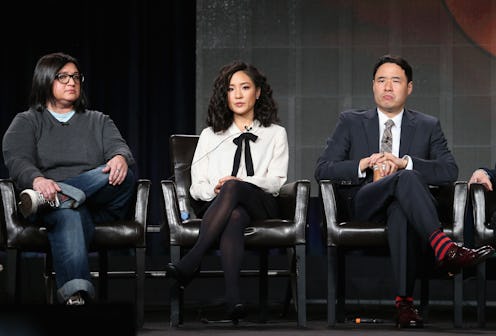Life
Despite Progress, We Have A Long Way To Go With Asian American Representation In TV

Can you name an American television show that currently features more than one Asian character? Are you thinking of Fresh Off The Boat? Or maybe Master of None? Does your list quickly dwindle after that? Recent research has found that while opportunities for minority actors are arguably getting better, Asian Americans are still underrepresented and often tokenized in TV shows.
The recent study entitled “Tokens on the Small Screen” comes from six scholars and professors at California universities. Researchers looked at 242 shows across broadcast, cable, and digital platforms during the 2015-2016 season. The study is a follow-up to research conducted 10 years prior during the 2005 and 2006 TV seasons. The authors of this most recent study looked at screen time, number of characters, and portrayal of characters of Asian or Pacific Islander descent to see whether representation had gotten any better in the last decade. If, at the beginning of this piece, you had a hard time trying to think of more than a couple shows that featured Asian characters, that likely has little to do with how well your memory serves you.
Sixty-four percent of current TV shows do not have a single Asian American character. That works out to be 155 of the 242 shows researchers looked at. That disparity gets worse when you look specifically at networks like HBO: 74 percent of shows on premium cable networks have no Asian American characters. This underrepresentation was even apparent among shows set in the most diverse, highly-populated cities in the U.S. 70 percent of shows set in New York feature no Asian American characters. The same is true for 53 percent of shows set in Los Angeles, despite the fact that almost a third of Asians in the U.S. live in California.
Can you name a TV show that doesn’t feature at least one white character as a series regular? If you can’t, that unsurprising as this is true for just four percent of shows. Ninety-six percent of TV shows have at least one white character.
While white people make up about 61 percent of the population, they compose almost 70 percent of the series regulars on TV. Asian people make up 5.9 percent of the population but just 4.3 percent of characters on TV. Latinx people, who are the largest minority population in the U.S. at 17.8 percent, are only 5.9 percent of TV series regulars. In percentage points, black people’s representation on TV (14 percent of TV characters) is just barely comparable to number of black Americans (13.3 percent of the population). However, numbers alone don’t guarantee accurate or diverse representation on TV shows.
“The television landscape continues to be littered with problematic racial stereotypes,” the study states, “including forever foreigner, yellow peril, model minority, emasculated men, exoticized women, sidekicks to White characters, whitewashed characters, and White experts.” Additionally, Asian characters, on average, don’t get as much screen-time as their White character counterparts. Eighty-seven percent of Asian American series regulars are on-screen for an average of less than half an episode. White characters are seen on-screen three times longer than Asian characters.
According to this study, over a third of all Asian characters on TV are on just eleven shows, with Netflix’s recently cancelled Marco Polo alone making up ten percent of the Asian representation on TV. Imagine if that significant of a portion of White characters were on less than a dozen TV shows. Imagine if the cancellation of one show meant a ten percent decrease in white characters on TV.
Shows like Fresh Off The Boat and Master of None and The Night Of are important and exemplary when it comes to diverse representation of Asian American characters, but we’re requiring them to do a lot of heavy lifting. Having just one Asian character would be significant growth for the 64 percent of shows that have none, but simply seeing an Asian face should be the bare minimum. True diversity in representation extends the Asian sidekick, the Asian girlfriend, the old Asian sage. That’s quite literally the definition of tokenism.
This study is especially significant when we talk about white washing and why any reduction in opportunity for Asian characters is felt. Representation matters. It especially matters if entertainment media want to stop painting minority characters as a monolith and start creating roles that reflect the diverse, multifaceted, and expressive people we are.